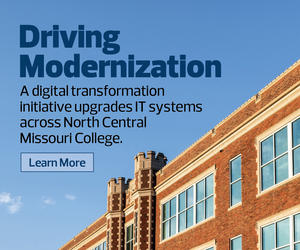It's Time to Rethink Budgets and Partnerships
In the Google/Boston Consulting Group study, over 40 percent of university and college leaders said it was their goal to reduce technology costs. Pursuing digital transformation — which requires taking on more tech — might seem like it would cost more, but not if approached in the right way. Leaders at Maryville University, for example, found it was important to rethink and reprioritize budgets.
“It’s really less about containing those costs and more about shifting away from the things you used to spend money on,” says Lombardi.
In other words, instead of going forward with a three-year computer refresh of on-campus hardware, it may be better to invest in something more innovative — or in a partner. Turning to others for help with digital transformation can be a critical step for many in higher education.
“When institutions want to do something, they tend to look inward and say, ‘Let’s create this,’” says Lombardi.
Building a private cloud or developing an in-house data analytics algorithm can be costly and time-consuming. Forming partnerships with institution-friendly companies like Google, Apple or Salesforce has become a much easier and rewarding path.
“If you use partnerships right, it gives you the power to expand opportunity for students in a whole host of ways that dramatically drive down costs in certain areas,” says Lombardi.
Click the banner below for exclusive content about cost containment in higher ed.












